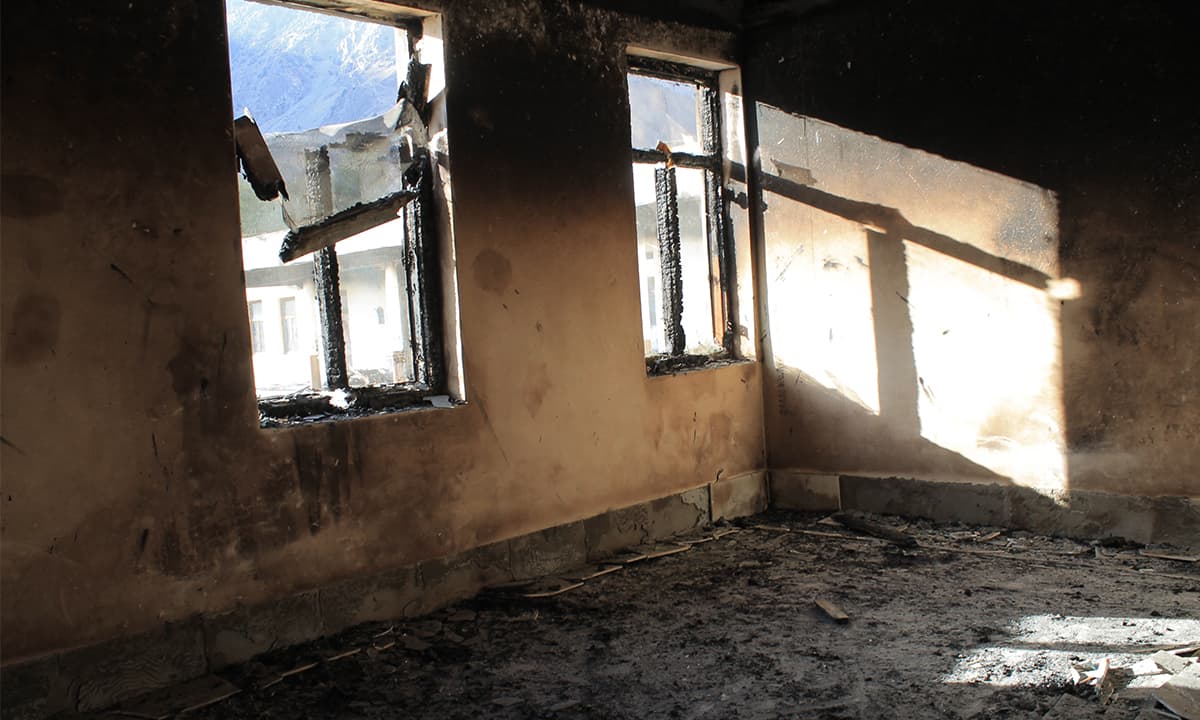
Darel is a narrow valley nestled amid high mountains. It has all the charm and beauty of a hill resort — snow-capped peaks in winters and lush green meadows, irrigated by a sparkling river rushing through them, in summers. And it is not some remote place lying undiscovered in its charming isolation. Its southern entry point is located on a major national highway, N-35, that connects Khyber Pakhtunkhwa’s Kohistan district with Diamer district in Gilgit-Baltistan. Darel made headlines a few weeks ago — not as an inviting but unspoiled venue for summer vacations, but as a hotbed of extremism.
In early August, unidentified men burnt down 14 schools in various parts of Darel, its neighbouring valley called Tangir, as well as Chilas, the headquarters of Diamer district. Many of these were educational institutions for girls. Some were built only recently and were awaiting their first students to enroll.
Asal Dad saw how the attackers went about the task.
He was on his watchman’s duty at the newly built Army Public School for boys in Darel at 1:00 in the night on August 2 when 50 or so masked men armed with AK-47 assault rifles and handguns barged in. They pushed him into a room where two of them kept guard on him. Others spread over different parts of the building. They left after an hour and disappeared in the darkness.
Soon afterwards, Asal Dad saw flames rising from one part of the school premises. He immediately phoned the contractor assigned to build the school. He lived close by and came over quickly. Together they went to a police station to report the incident. “The police came the next day,” says Asal Dad, who seems to be in his late twenties. The building was destroyed by then. Almost all other schools attacked in the region were similarly damaged extensively — except one in Tangir where a watchman opened fire at the assailants who ran away after having smashed some doors and windows.
For Malik Shifayat-ur-Rahman, a young tribal chieftain in Tangir, there is nothing unusual about attacks on schools, no matter how dastardly they appear to the rest of Pakistan.
Opposition to school education is, indeed, an old phenomenon in Diamer district where literacy rate among boys (aged between 10 and 15 years) remains just 46 per cent, lowest in the whole of Gilgit-Baltistan which has an overall literacy rate of 66 per cent among boys in the same age group. Literacy rate in Diamer among girls (aged between 10 and 15 years) is even lower, a paltry 12 per cent, which compares very poorly with a 42 per cent overall literacy rate among girls in the same age group in the entire Gilgit-Baltistan.
What is unusual about the latest attacks is their geographical spread, says Shifayat-ur-Rahman. They happened in three different parts of the district. And also their timing, he adds. They were all carried out the same night. “What does this signify?”
Diamer is the gateway between Gilgit-Baltistan and the rest of Pakistan, he explains, so the simultaneous attacks on so many schools could have been caused by national factors as much as by local ones. These factors, according to him, could be connected to the China-Pakistan Economic Corridor (CPEC) which links the two countries through Gilgit-Baltistan. Or, he says, these could be linked to the Diamer-Bhasha Dam being planned on the border between Diamer and Kohistan.
This excerpt is part of the Herald's October 2018 issue. To read more, subscribe to the Herald in print.







